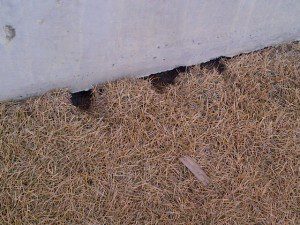Professional Methods for Vole Control and Avoidance
Wiki Article
Comprehensive Overview to Efficient Vole Insect Control: Problem Identification and Treatment Techniques
In the realm of reliable insect control, vole problems position an unique obstacle that demands a calculated approach. These little rats, usually mistaken for computer mice, can ruin yards, yards, and plants if left unchecked. Recognizing the signs of vole visibility and carrying out targeted treatment techniques are important parts of a successful bug administration plan. By discovering the subtleties of vole habits, understanding crucial indications of infestation, and examining a range of control choices, one can establish a comprehensive method to combat these elusive bugs.Recognizing Vole Behavior
Vole habits is identified by their delving practices and quick recreation rates, making them a difficult parasite to regulate successfully. These little rodents normally produce complex tunnel systems underground, using them for shelter, food storage, and transport. Voles are herbivores, eating a selection of plants, origins, light bulbs, and lawns, which can create considerable damage to yards, orchards, and yards. Their rapid reproductive price additional complicates control efforts, with ladies qualified of creating several litters in a solitary year, each having a number of children.Voles are most energetic during the very early morning and night hours, spending most of their time foraging for food. Their delving behaviors not only disrupt yards and yards but additionally make them challenging to discover and eliminate. Comprehending vole habits is essential for reliable insect control approaches. By determining their burrow areas, keeping an eye on feeding areas, and applying targeted control techniques, such as capturing or habitat adjustment, vole infestations can be managed successfully.
Indications of Vole Problem

Avoidance Strategies
Implementing effective prevention techniques is crucial in reducing vole problems and guarding vegetation from their devastating feeding routines. To avoid vole problems, it is essential to start by removing possible food sources and sanctuary.On a regular basis examining the residential vole yard damage property for indicators of vole task, such as runways and burrow openings, is important for early discovery and prompt activity. If vole task is presumed, think about utilizing traps or repellents strategically put near their paths. Utilizing all-natural predators like serpents or owls can also assist keep vole populaces in check. By applying a combination of these prevention property owners, strategies and garden enthusiasts can efficiently shield their greenery from vole damages.
Non-Lethal Control Methods
To successfully handle vole populaces while prioritizing gentle techniques, non-lethal control strategies offer practical services for decreasing vole damages in landscapes and yards. These barriers can be hidden at the very least 12 inches curved and deep at a 90-degree angle to avoid voles from tunneling beneath.
Lethal Control Options
One efficient method for resolving vole invasions in landscapes and yards involves the tactical use lethal control alternatives. When confronted with a serious vole problem that non-lethal approaches have actually fallen short to consist of, implementing deadly control measures becomes critical. One frequently employed dangerous control option is the use of breeze catches. These catches are created to quickly and humanely eliminate voles upon activation, making them a preferred selection for many gardeners and landscaping companies. To increase the performance of breeze catches, it is suggested to position them in locations where vole task is high, such as along paths or near burrow entryways. An additional lethal control choice is the usage of toxic baits especially created to target voles. These lures consist of toxin that is consumed by the voles, leading to their ultimate death. However, caution should be worked out when utilizing harmful lures to avoid harm to non-target animals or pets. Overall, when employing deadly control choices, it is important to do so sensibly and according to regional guidelines to successfully handle vole invasions.Final Thought
Finally, efficient vole insect control calls for a detailed understanding of vole habits, identification of indicators of problem, execution of prevention methods, and use of both lethal and non-lethal control approaches. By integrating these techniques, people can properly handle vole populaces and protect their residential or commercial property from damages. It is very important to deal with vole problems quickly to stop additional concerns and lessen the influence on the surrounding atmosphere.Offered the elaborate passage systems and fast reproduction prices characteristic of voles, identifying the indications of vole problem becomes essential in reliable bug control. One of the main signs of vole visibility is the existence of surface area runways or trails in grass or snow, commonly concerning 1-2 inches wide, created as voles take a trip in between their burrows and food sources.To efficiently take care of vole populations while prioritizing humane methods, non-lethal control approaches use useful remedies for minimizing vole damages in landscapes and yards.One reliable method for attending to vole infestations in landscapes and gardens entails the tactical usage of dangerous control options. vole lawn damage.In verdict, efficient vole bug control needs an extensive understanding of vole habits, identification of indications of problem, implementation of prevention techniques, and utilization of both non-lethal and lethal control approaches
Report this wiki page